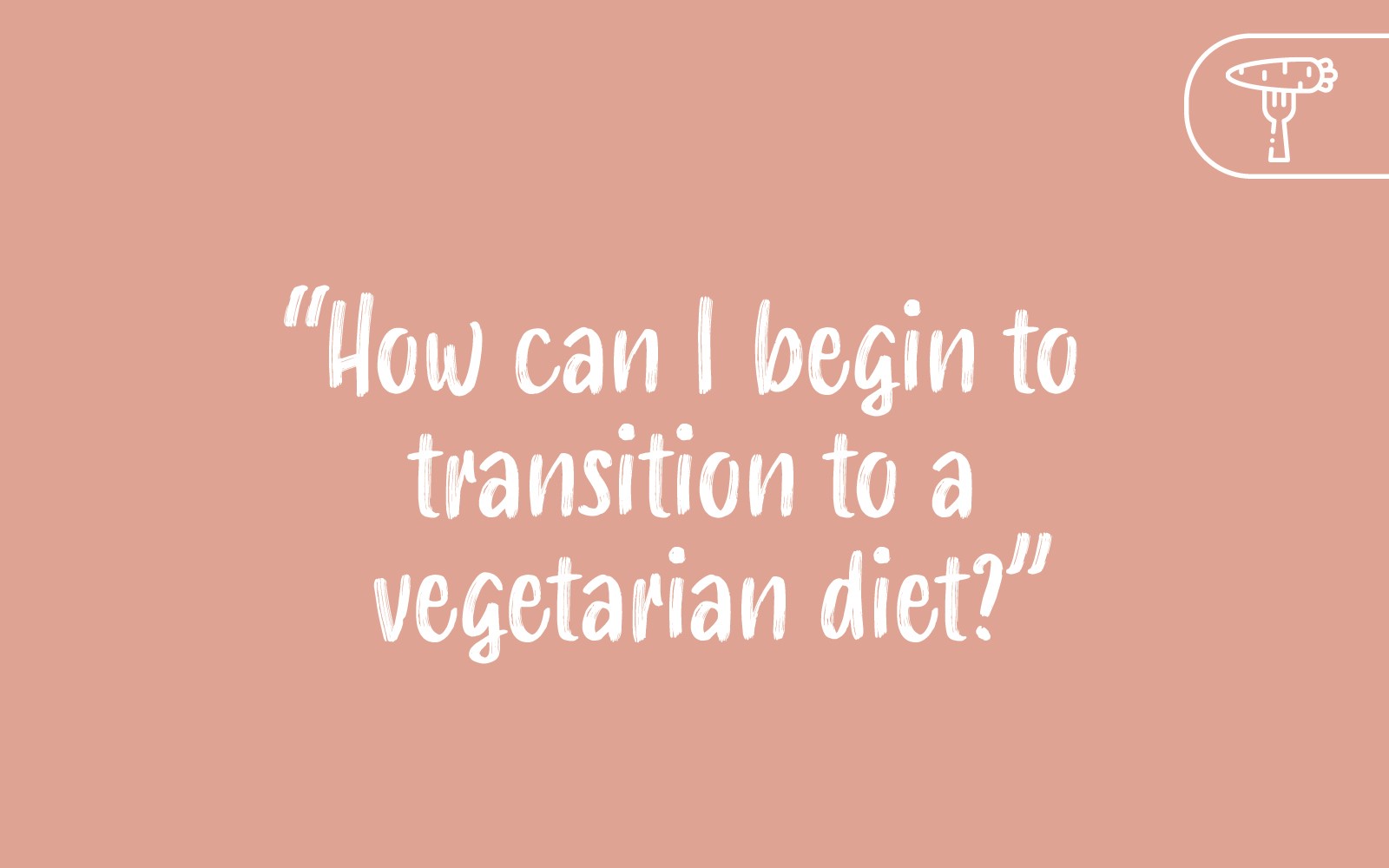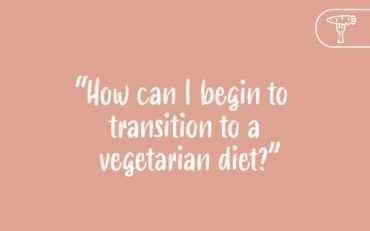
Transitioning to a vegetarian diet can seem a little bit overwhelming. However, if you want lasting success with a plant-based diet, you don’t have to go above and beyond the “kale” of duty right out of the gate! In fact, just because you feel you can’t do everything within a vegetarian lifestyle right now doesn’t mean you should do nothing. Work your way through the steps below and you’ll be reaping the benefits of a plant-based diet before you know it.
5 Steps Towards a Vegetarian Diet
1. Determine YOUR Why.
Changing eating behaviors is very difficult if you don’t have solid clarification on why it’s worth it to you to change. Many people choose to transition to a vegetarian diet due to health, environmental and/or ethical reasons. What are your reasons? Figure out and prioritize the values you have for your life and live it!
2. Educate Yourself.
Based on your answers in question one, determine what type of vegetarian you want to be. A lacto-vegetarian will still eat dairy products but avoid eggs, meat and fish, while a lacto-ovo vegetarian will include eggs and dairy, but avoid just meat and fish. A vegan diet is the most restrictive of the vegetarian eating plans in that it eliminates all animal foods and animal-derived food products, including honey.
Beyond determining the type of vegetarian lifestyle you want to live, you must learn how to nutritionally balance your meals. Unfortunately, you can’t just cut out dairy, meat or any other food group and call it a day. Those food groups provide vital nutrients that must be replaced through the careful combination of other vegetarian foods. Common nutrients of concern for vegetarians/vegans include protein, omega-3 fats, calcium, vitamin D, zinc, iron and vitamin B12. An excellent FREE resource to learn more about forming well-balanced, nutrient-dense vegetarian meals is the Vegetarian Resource Group. However, we do highly recommend that individuals, especially those with specific health care needs, consult with a Registered Dietitian (like us) before drastically altering their eating patterns.
3. Set Small Goals.
Slow and steady really does win the race here. By now, you have your reasons for wanting to live a vegetarian lifestyle and you’ve learned what it entails, but now you’re panicking about what to do. The answer is do anything, but nothing! Set small goals for yourself. Try fortified soy or nut milk, instead of dairy milk this week. Replace half your beef or turkey taco meat with meaty mushrooms and black beans. Get creative with crumbled tofu in lasagna to replace ricotta cheese. Start small and test the waters. Find out what you like and progress from single vegetarian meals to whole, plant-based days, such as “Meatless Mondays.” Just remember that it takes 10–15 tries to like a new food, so don’t give up on yourself too soon!
4. Experiment with Flavor.
We are more likely to eat a certain way when we actually like how the food tastes! While high-quality vegetarian foods will naturally contain less salt, added sugars, and saturated fat and trans-fat, that doesn’t have to mean less flavor! Experiment with powerhouse, nutrient-dense foods, like herbs and spices, for the ultimate vegetarian dining experience.
5. Learn to Love Vegetables.
Fall in love with the tastes, textures, colors and versatility of vegetables (more so the non-starchy ones). Sure, it might seem like you’re on the right path when choosing to eat a veggie burger on a whole wheat bun with a side of sweet potato fries, but in reality, your plate is overflowing in starches (i.e. veggie burger, bun, sweet potato fries) and severely lacking in what it needs most: non-starchy veggies! At each of your meals (breakfast, lunch and dinner), strive to make at least one quarter to half of your plate non-starchy vegetables. What are the non-starchy veggies, you ask? These include artichokes, arugula, asparagus, bamboo shoots, bean sprouts, bell peppers, bok choy, broccoli, broccoflower, Brussels sprouts, cabbage (all types), cauliflower, celery, chicory, chives, collard greens, cucumber/dill pickles, eggplant, escarole, fennel, garlic, all greens, green beans, kale, leeks, lettuces, mushrooms, okra, onion, peppers, radicchio, radishes, salsa (1/4 cup), snow peas, kelp, spinach, sprouts, squash (yellow, summer or spaghetti), Swiss chard, tomatoes, water chestnuts, watercress, zucchini and vegetable juice (made from non-starchy veggies and no fruit). Enjoy!
Keri Lasky, MS, RD, LDN, CLT, To Have & To Nourish | tohaveandtonourish.com
This post is a sponsored collaboration between To Have & To Nourish and Lehigh Valley Style.

